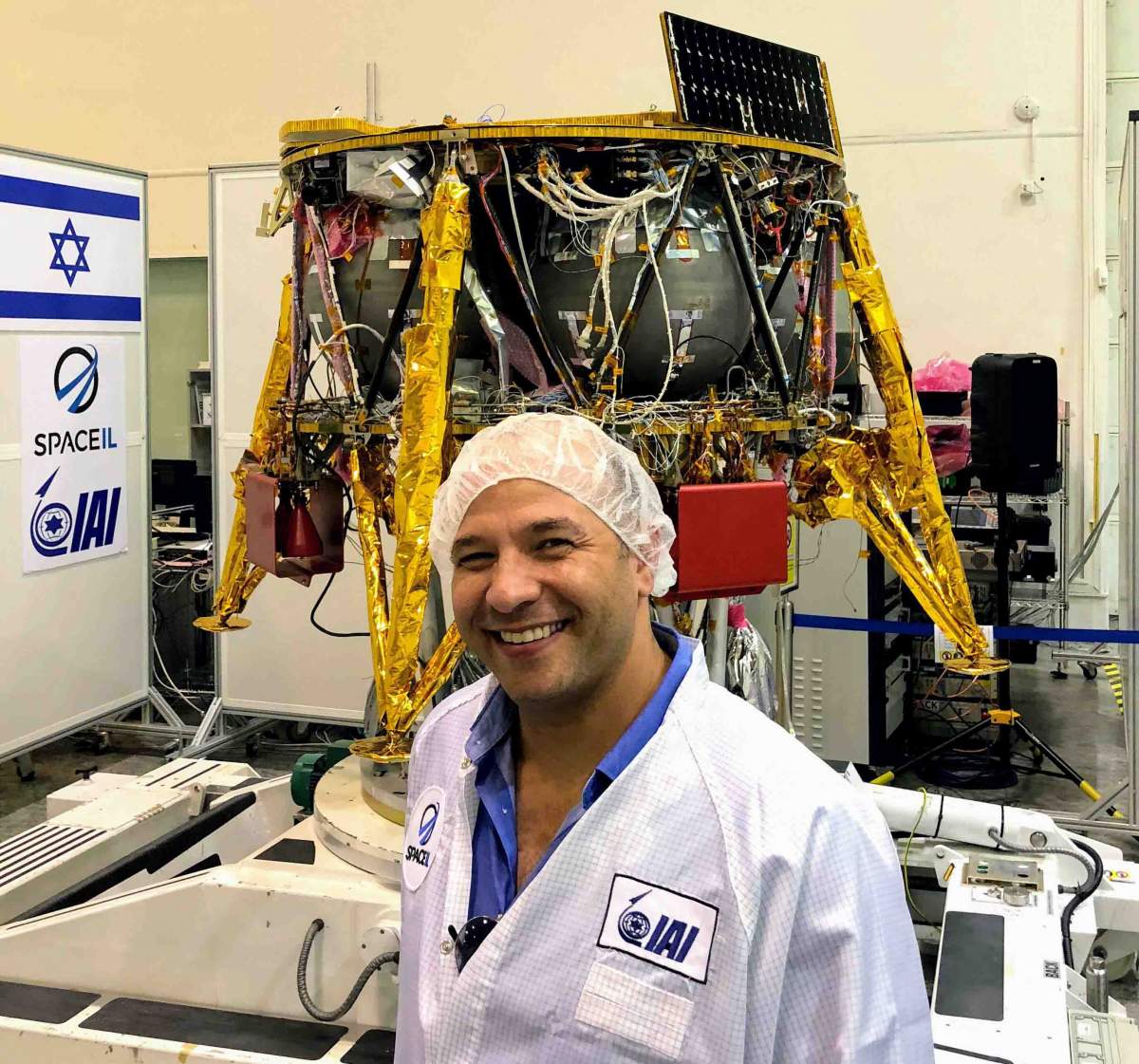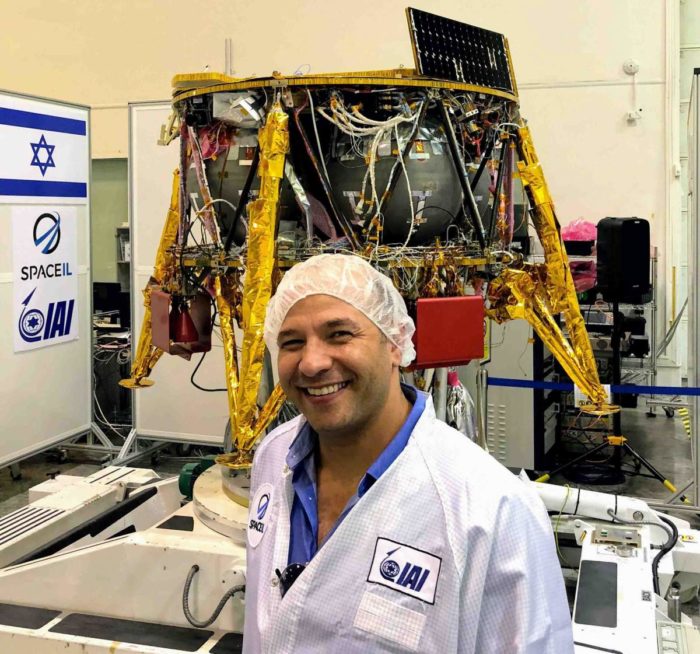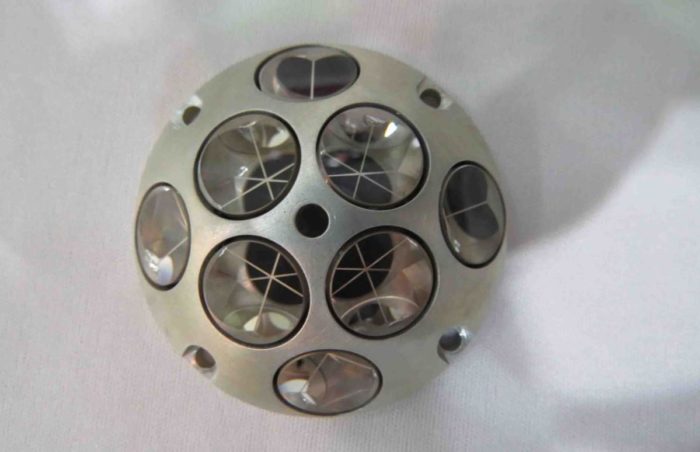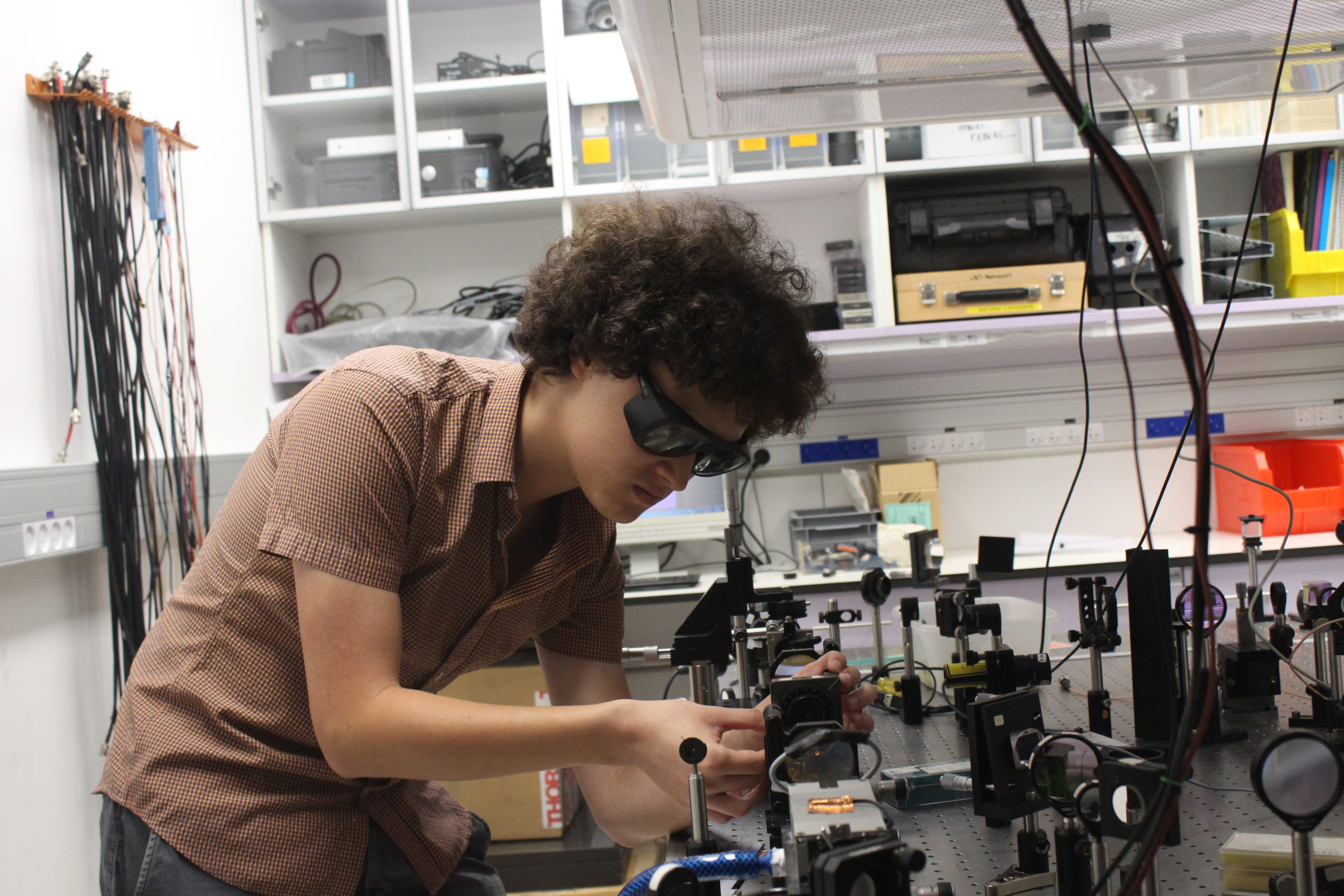
February 12, 2019
After an enterprise lasting nearly a decade, the Israeli unmanned moon mission ‘Beresheet’ (Genesis) will soon take off from Earth, bound for the Moon’s rocky surface, principally to measure its magnetic field.
Professor Oded Aharonson, of the Weizmann Institute of Science’s Earth and Planetary Sciences Department, is the head of the international Science Team. He will be watching closely as the craft approaches the Moon and initiates the scientific part of the mission, which will start well before touch-down on the Moon’s surface.
The cost of planning and building the spacecraft was $US 100 million, most of it contributed by private donors, led by the president of SpaceIL, the philanthropist Morris Kahn.
If the Beresheet craft touches down successfully on the Moon, it will make Israel only the fourth country to land on the Moon, after the US, the former Soviet Union and China. The spacecraft will be launched on a Falcon 9 rocket made by SpaceX, from Cape Canaveral, Florida, and, after multiple orbits around the Earth, will arrive at its destination two months later.
Although the landing will be a historic achievement for Israel, the project is an independent initiative started by the three founders of SpaceIL, who had two main objectives in mind: firstly, to land the first Israeli space vehicle on the Moon and secondly, to inspire a new generation of students to study science and technology.
The three, Yariv Bash, Kfir Damari and Yonatan Winetraub, had entered Israel into the Google LunarX Prize competition. Although the competition officially ended in March, 2018, with no winners, SpaceIL announced they would continue working toward the goal of landing on the Moon.
Since the establishment of SpaceIL in 2011, the mission of a lunar landing has become a national project, and it has received support from all quarters. Israel Aircraft Industries has been a full partner in the project from the beginning. Other supporters include government-owned companies and academia, as well as private donors. The most prominent among the former are the Weizmann Institute of Science, the Israel Space Agency, Israel’s Ministry of Science, Bezek Communications and more. Among the private donors are Dr Miri and Sheldon Adelson, Sylvan Adams, Sammy Segol, Lynn Schusterman and Stephen Grand.
The scientific instruments aboard the spacecraft will begin measuring even before landing.
Aharonson, who leads the scientific investigation, explained that the main scientific goal will be measuring the magnetic field of the Moon to help understand its source.
“The Moon, today, has an iron core like that of the Earth, but it is small and cold. This core does not generate a global magnetic field, as ours does, but on the surface, various areas or rocks are magnetic at different levels. If we can measure the magnetism of these rocks, we can begin to understand how and when this magnetism arose,” he said.
According to one widely-accepted theory, the Moon’s iron core was once hotter and convecting, creating a dynamo that magnetized the rocks on the Moon. The instruments on the landing craft will thus be measuring the magnetic fields in ancient volcanic rocks (similar to basalt on Earth) to see if their intensity matches that suggested by the core-dynamo theory. Among other things, such measurements might frame the time in which the dynamo was active and reveal how long ago it ceased.
Other measurements – for example, of rocks in the Moon’s craters – could uncover different sources of magnetization, possibly providing evidence that at least some of the Moon’s magnetic field is due to the bombardment of asteroids, or even from magnetic material that originated in the asteroids, themselves.
Aharonson explained that the instrument will first be calibrated by measuring the magnetic field of the craft, itself, while it is still cruising toward the Moon. Once it is in orbit around the Moon, the instrument will already be able to detect the lunar field. It will be the short 15 minutes in which the craft descends to surface of the Moon that will be critical. As it approaches the surface, the readings of the magnetic field will increase; measuring this increase, as well as the changes recorded as the craft passes over different areas, will be crucial to understanding its source.
As Head of the SpaceIL International Science Team, Aharonson helped select the landing site – one that will enable communication and ensure the safety of the mission, allowing the craft to land smoothly and in a suitable area for performing the scientific experiments.
The Beresheet craft will also carry a unique array of mirrors provided by NASA for reflecting a laser beam of light precisely back in the direction of its source. The source, in this case, will be a NASA Moon orbiter (LRO), and it will enable the team to locate the position of the Beresheet spacecraft on the Moon’s surface.

Professor Oded Aharonson and the Beresheet lunar craft

The lander will employ this "retroreflector" to return a laser beam to its source on a NASA Moon orbiter and thus determine its precise location






